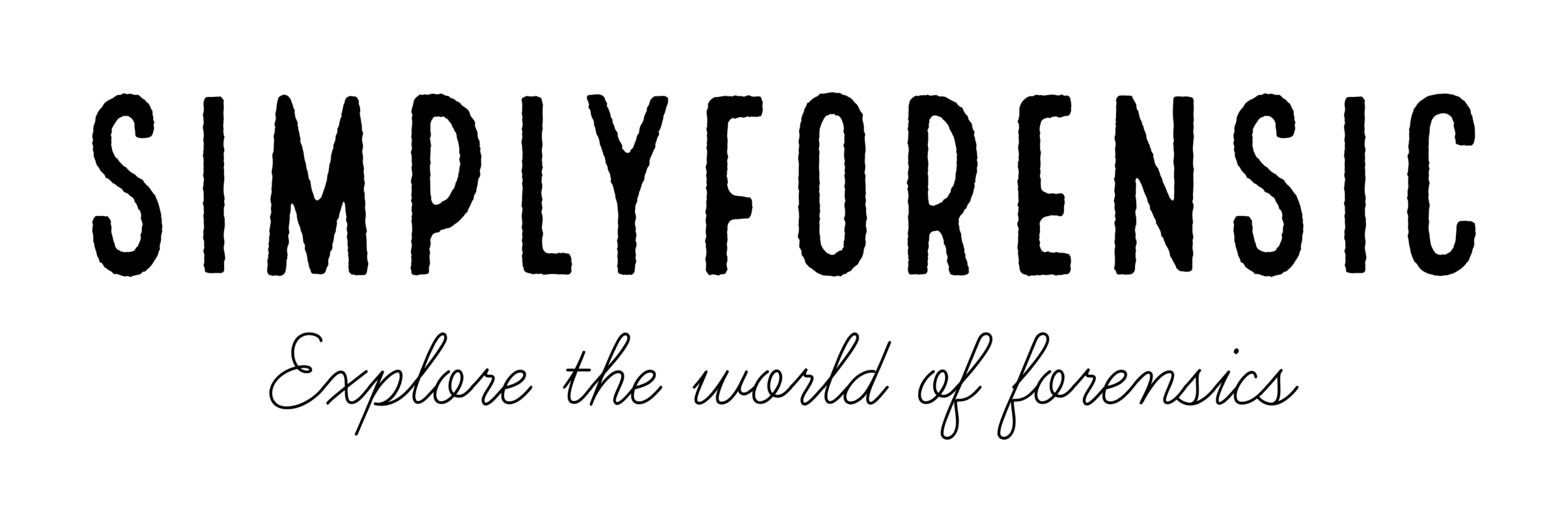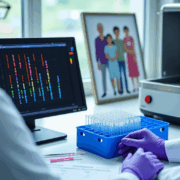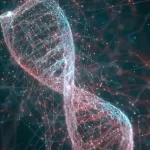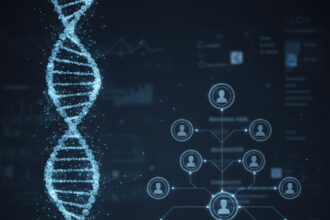Did you know that proper forensic practices can increase conviction rates by up to 25%? Accurate and thorough crime scene documentation is the backbone of any successful crime scene investigation. The documentation process starts when first responders arrive at the scene. They need to pay close attention to every detail, from start to finish.
- Photography principles and equipment
- Video documentation methods
- Equipment Options and Technological Advances
- Admissibility and Evidentiary Value
- Best Practices for Crime Scene Video Recording
- Sketching techniques and tools
- Purpose and Types of Crime Scene Sketches
- Sketching Methods and Applications
- Tools and Equipment for Effective Sketching
- Digital Transformation
- Notes and narrative descriptions
- Essential Elements for Comprehensive Documentation
- Structured Documentation Approaches
- Documentation Best Practices
- Digital mapping and 3D documentation
- Documentation for different crime types
- Homicide Documentation
- Digital Crime Documentation
- Sexual Assault Documentation
- Arson Investigation Documentation
- Burglary Scene Documentation
- Technology trends in scene documentation
- Documentation best practices
- Conclusion
- FAQs
- What are the essential components of effective crime scene documentation?
- How should investigators approach documenting different types of crime scenes?
- What role does technology play in modern crime scene documentation?
- Why is proper documentation crucial for criminal investigations?
- What are some best practices for crime scene documentation?
Photos serve as the quickest way to preserve crime scene evidence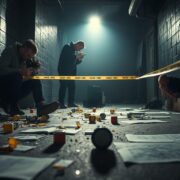
This post covers everything in documentation techniques that strengthens cases. You’ll learn to become skilled at using oblique lighting to find hidden evidence. The guide also shows how to create court-admissible sketches that include measurements and directional references. We explore proven ways to capture and preserve crime scene evidence that meets legal requirements and helps win prosecutions.
Photography principles and equipment
Crime scene photography needs both technical equipment and basic principles to make photos that hold up in court. Photos play a key role in documenting evidence. You need the right tools and methods to capture accurate visual details of crime scenes.
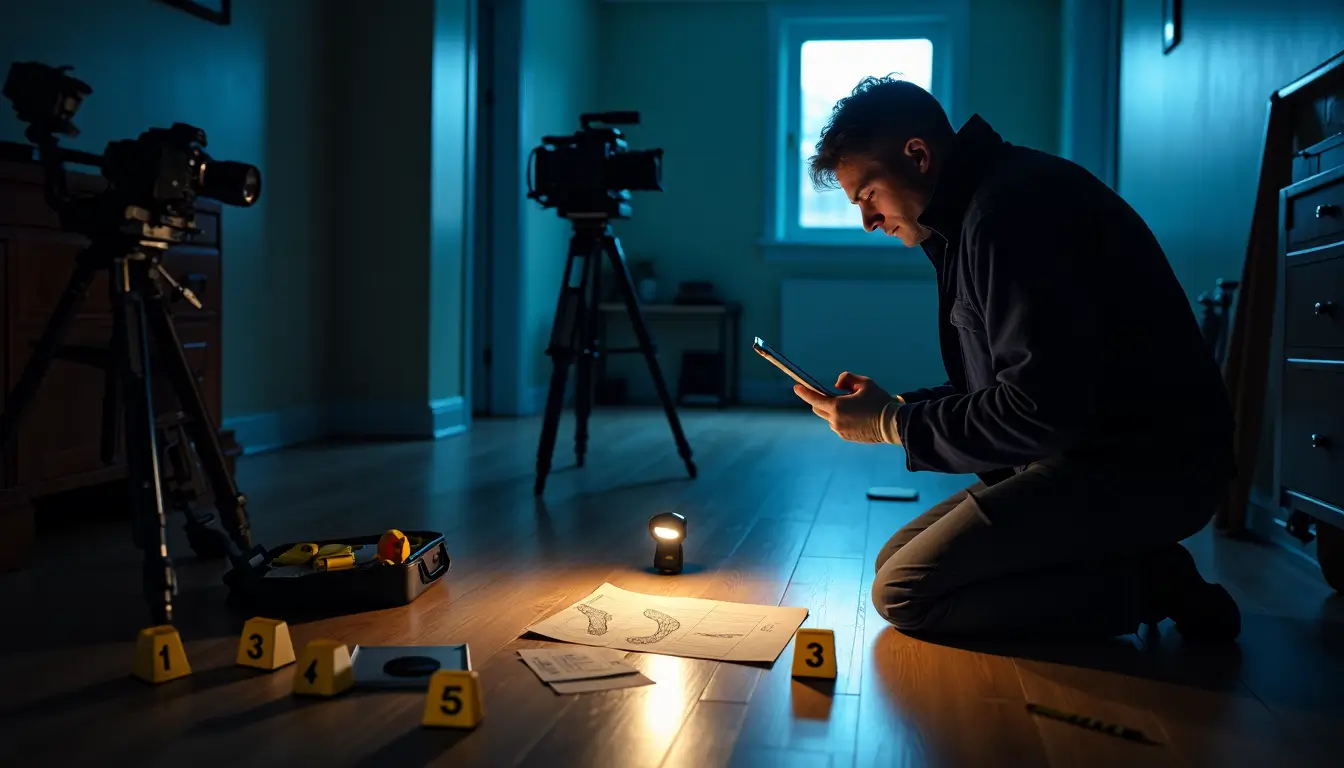
Essential Camera Equipment
Taking professional crime scene photos requires specific gear. Traditional 35-mm cameras offer high-resolution detail, making them ideal for close-up shots. However, modern digital cameras provide versatility, immediate review, and metadata logging, which are invaluable for on-site documentation.
A Digital Single Lens Reflex (DSLR) or Mirrorless Interchangeable Lens Camera (MILC) with at least 12 megapixels is essential. These cameras allow you to create images that can be enlarged up to 16″ x 20″ for court exhibits. Basic gear typically includes normal to wide-angle lenses, macro features, flash units, scales or rulers, tripods, and remote shutter controls.
Special equipment helps document evidence better. Crime scene photographers use alternate light sources (ALS), focusing rails, barrier filters, polarizing filters, ring flashes, flash diffusers, and leveling devices. Specialized forensic light sources at specific wavelengths (365, 395, 450, and 470 nm) help reveal evidence that can’t be seen with the naked eye, especially biological fluids.
Technical Photography Principles
Technical principles guide photographers to create court-worthy evidence. Quality crime scene photos need four key features: the correct exposure, maximum depth of field, no distortion, and sharp focus. Modern cameras have reliable auto-exposure that works for about 90% of crime scene photos. Photographers should know when manual adjustments are more effective.
Depth of the field shows how much of the photo stays in sharp focus. Three things affect it: lens focal length, distance to subject, and lens aperture [2]. Small apertures (higher f-numbers, like f/22) keep more of the scene in focus. This prevents lawyers from claiming that evidence was hidden due to selective focus.
Crime scene photography follows a clear system with three main photo types:
- Overall/Long-Range Photos – Show the whole scene with wide-angle lenses and establish location context
- Mid-Range Photos – Show how items and evidence relate to each other, giving context for close-ups
- Close-Up Photos – Focus on detailed evidence with scaled and unscaled versions that fill the frame
Photographers must take “examination quality” photos for comparisons or exact measurements. These show latent prints, bloodstains, bullet strikes, tool marks, bite marks, pattern injuries, and footwear impressions.
Lighting Techniques and Equipment
Lighting makes a big difference in clearly showing evidence. Many crime scenes happen in dark or poorly lit areas. Good lighting helps make investigations safe and thorough. One method, called “painting with light,” uses long exposures while moving lights around to reveal details in dark areas. Flash fill helps illuminate shadows where evidence might be hidden.
Photographers should secure the scene and check conditions before taking photos. The main goal is to document everything without disturbing the scene. They work from outside views to close-up shots. This method provides courts with accurate visual proof while protecting the evidence.
Video documentation methods
Video documentation works alongside still photography to give a continuous view that shows how things connect and move in a crime scene. It adds a dynamic perspective that helps investigators, prosecutors, and juries better understand spatial relationships. The resolution might be lower than that of still photos, but video offers unique advantages in showing how a crime scene unfolds and its layout.
Major cases benefit greatly from video recordings, although they should not replace still photos due to their lower resolution. Videos excel at showing how pieces of evidence relate to each other and what they mean in the bigger picture of the scene.
Equipment Options and Technological Advances
Today’s video documentation uses several technologies, ranging from basic camcorders to state-of-the-art systems:
These new tools let investigators, lawyers, and judges view the scene from different angles.
Admissibility and Evidentiary Value
Crime scene videos are evidence and need careful handling. Original videos should remain unedited, and each video should feature only one scene. These steps help make sure courts will accept the evidence.
Courts don’t often show crime scene videos directly, but these recordings help explain the scene to other investigators. People who worked at the scene can use them to refresh their memory. Well-made videos can make judges and jurors feel like they’re at the crime scene. This helps them understand how evidence fits together. Videos let investigators capture more items in the scene and test multiple theories that photos alone can’t capture due to time and space limits.
Lawyers might use video evidence in their opening and closing arguments. They can take still shots for extra exhibits or add clips to their presentations. New court software can even match video files with transcripts to display both simultaneously. All the same, preparing videos takes time and often requires special editing equipment.
Best Practices for Crime Scene Video Recording
A good crime scene video starts with an investigator’s brief introduction. They need to state the date, time, location, and type of crime, and give a quick overview of what the video will show. The recording should stop after this introduction. The microphone should be off to avoid picking up distracting noises during the actual documentation.
The video should start with a broad view of the scene and its surroundings. A slow 360-degree sweep from one spot helps document landmarks, lighting, traffic patterns, and other essential details. The camera operator should then move through the scene step by step, showing where important items are and how close they are to each other. They should start with wide shots, then medium shots, and finish with close-ups of specific evidence.
Camera movements must be smooth and well-thought-out. Experts say that pans, tilts, and zooms should be controlled and steady. Quick movements can confuse viewers. This careful approach accurately represents the scene’s layout.
Sketching techniques and tools
Crime scene sketching works alongside photography and video to provide vital spatial context that 2D images often miss. Digital documentation methods continue to improve, but sketching remains essential for thoroughly documenting crime scenes. It provides measurements and viewpoints that help investigators reconstruct events precisely.
Purpose and Types of Crime Scene Sketches
Crime scene sketches are detailed, graphic representations that show spatial relationships, physical dimensions, and the placement of evidence. They work best when capturing three-dimensional aspects of complex scenes where photos might not tell the whole story.
Investigators create two main types of sketches:
Sketching Methods and Applications
Crime scene sketches need several proven measurement techniques to be accurate:
Tools and Equipment for Effective Sketching
Crime scene sketching needs specific equipment. A standard sketch kit contains:
- Cross-sectional paper
- Mechanical pencils
- Heavy-duty squares and protractors
- Specialized templates (traffic, general crime scene, human figure) – These purpose-built templates make it easier to draw everyday objects found at the crime scene.
- Directional compass
- 50′ measuring tape
- Durable carrying case with firm writing surface
ABFO No. 2 photomacrographic rulers are common in documentation. These rulers have L-shaped legs with length measurements and three circles to ensure the camera stays perpendicular to the evidence.
Digital Transformation
Computer-Aided Design (CAD) has revolutionized crime scene sketching, making it more accurate and faster. Digital sketching beats traditional methods in several ways:
- Processes scenes quicker and more effectively
- Documents everything the same way
- Measures things more accurately
You can use different software for digital crime scene sketching:
- SmartDraw: Has easy-to-use interfaces with ready-made templates for homes, businesses, and outdoor scenes. It comes with special symbols for guns, bloodstains, footprints, and body outlines.
- AutoCAD offers precise"Precise" refers to the degree of closeness or consistency between multiple measurements or values taken under the same conditions. It indicates how well these measurements agree with each other, regardless of whether they are accurate Read Full Definition solid, surface, and mesh modeling technology, which is well-suited for complex scenes.
- SketchUp lets you create 3D models of crime scenes without requiring much technical knowledge.
- Rolleimetric MR-2: Combines single-camera measuring systems with CAD software to create high-quality sketches. This works excellently for serious crime scenes or major disasters.
Legal Significance
Crime scene sketches are powerful tools in courtrooms, whatever technique you use. Forensic sketch artists can testify about how they created the sketches, the accuracyIn scientific and measurement contexts, "accuracy" refers to the degree of proximity or closeness between a measured value and the true or actual value of the measured quantity. Accuracy indicates how well a measurement reflects Read Full Definition of their measurements, and why their work is reliable. Well-made sketches help explain complex information to judges and juries clearly, which makes case presentations stronger.
Notes and narrative descriptions
Complete written documentation serves as the backbone of a successful crime scene investigation. It creates a permanent record that supports all other evidence collection methods. An investigator’s notes become significant in court proceedings and determine whether evidence stands or falls.
Notes should follow a chronological order, starting from the arrival time and documenting scene conditions before evidence collection begins. Crime scene professionals combine two main types of notes:
- General overview notes – Descriptive documentation created during original inspection without disturbing evidence.
- Detailed specific notes – Precise descriptions of each area, search steps, and evidence items.
Essential Elements for Comprehensive Documentation
Crime scene notes must accurately capture the times, locations, conditions, and personnel involved. Investigators need to document:
- Date and time the crime was reported
- Type of crime and location description
- Names of personnel collecting evidence
- Weather and lighting conditions
- Interior and exterior descriptions, including door and window positions, smells, and temperatures.
- Personal information from witnesses, victims, and suspects
The sequence of events needs to be carefully recorded, including the investigator’s actions and scene elements, in the order they occurred. Investigators should stick to factual observations and avoid personal opinions, analysis, or conclusions.
Structured Documentation Approaches
Many agencies employ structured formats for crime scene reports. Indeed, chronological organization remains fundamental, with notes reflecting the sequence of both the crime and the investigation. Moreover, these reports should contain only facts – no opinions, analysis, or conclusions.
For maximum effectiveness, some departments divide narrative sections into five categories: summary, scene description, methods of processing, evidence collected, and pending matters. This structured approach ensures comprehensive documentation while maintaining organizational clarity.
Documentation Best Practices
Crime scene notes must be thorough, chronological, and factual. They should detail every step and process of the investigation as events occur. Accordingly, initial notes should be continuously updated throughout the investigation.
Precise measurement language proves vital in documentation. Rather than vague descriptions, notes should specify exact locations (e.g., “7 inches south of the east corner of the table”). This precision helps establish spatial relationships that photographs might not clearly convey.
Throughout the process, investigators must remember that notes serve as memory aids that might be referenced months or years later in court. Therefore, these records must be maintained as permanent documentation. When mistakes occur, corrections must be transparent, with new entries referencing the original notations.
Crime scene documentation combines science and storytelling, creating a forensic narrative that reconstructs past events by integrating evidence from crime scenes, witness testimony, and expert analysis.
Digital mapping and 3D documentation
Modern digital technologies have transformed crime scene documentation, enabling investigators to create highly detailed 3D representations that accurately capture spatial relationships. These advanced tools not only produce permanent digital records for ongoing investigation use but also enhance presentations in court.
The ability to create precise virtual replicas has significantly elevated the capabilities of crime scene documentation. With digital mapping and 3D documentation at the forefront of forensic science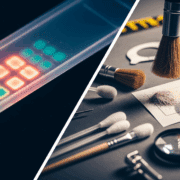
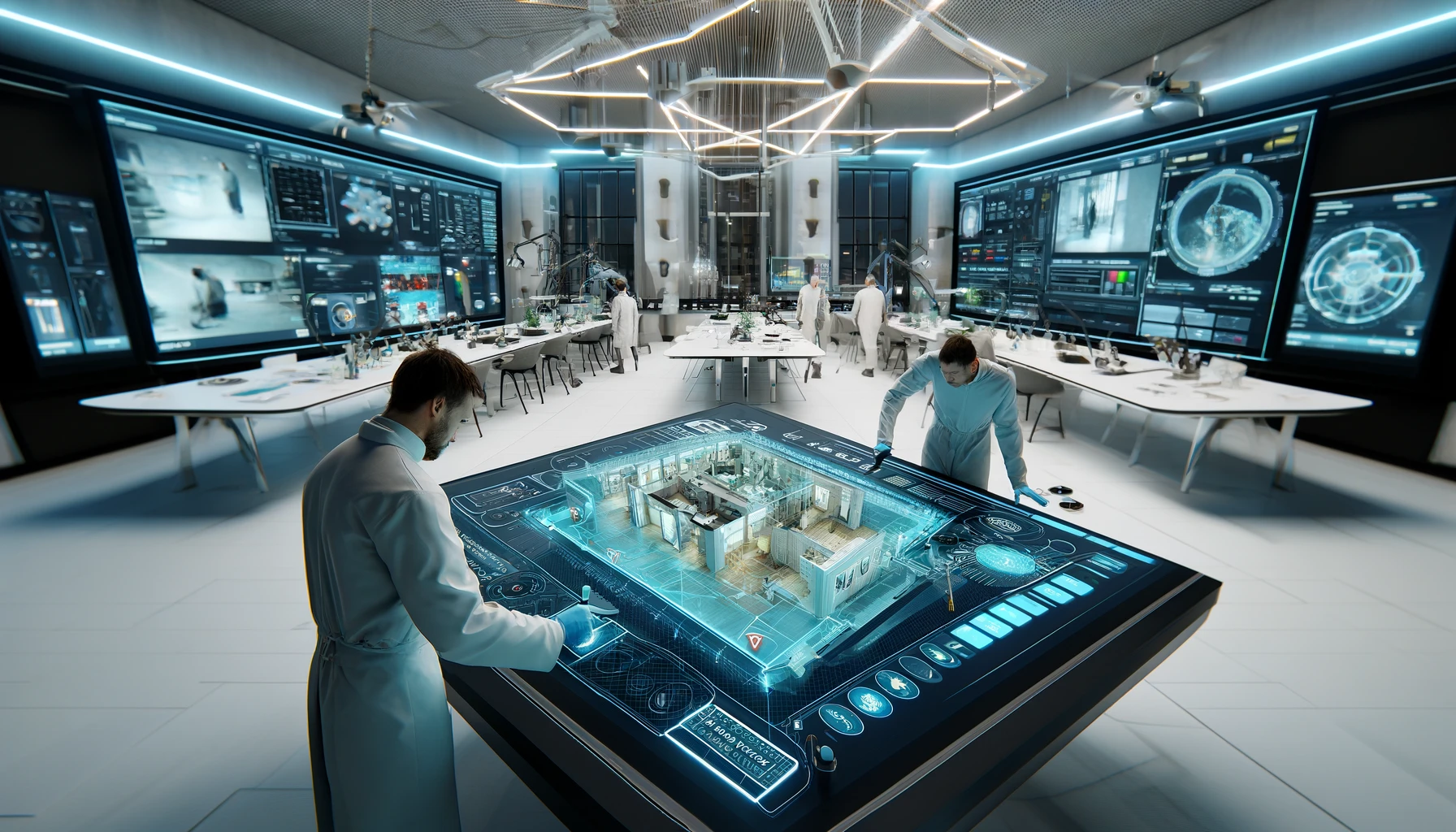
3D laser scanning technology, including systems such as LiDAR (Light Detection and Ranging), is revolutionizing modern forensic investigations. These advanced, non-contact tools use laser pulses to capture millions of spatial data Information in analog or digital form that can be transmitted or processed. Read Full Definition points in seconds, generating detailed “point clouds” that digitally reconstruct crime scenes with millimeter accuracy. LiDAR, a specific form of 3D laser scanning, excels at rapidly measuring distances and producing complex visualizations—often within minutes. By minimizing human error and contaminationContamination - The unwanted transfer of material from another source to a piece of physical evidence. The inadvertent touching of a weapon, thereby adding fingerprints to it is an example of evidence contamination. Read Full Definition risks, these technologies preserve critical evidence, providing investigators, judges, and juries with precise, high-resolution context to understand the scene.
Information in analog or digital form that can be transmitted or processed. Read Full Definition points in seconds, generating detailed “point clouds” that digitally reconstruct crime scenes with millimeter accuracy. LiDAR, a specific form of 3D laser scanning, excels at rapidly measuring distances and producing complex visualizations—often within minutes. By minimizing human error and contaminationContamination - The unwanted transfer of material from another source to a piece of physical evidence. The inadvertent touching of a weapon, thereby adding fingerprints to it is an example of evidence contamination. Read Full Definition risks, these technologies preserve critical evidence, providing investigators, judges, and juries with precise, high-resolution context to understand the scene.
Photogrammetry provides another powerful method to create precise, measurable 3D models from ordinary photographs. This technique applies triangulation principles – overlapping photographs taken from different spatial locations create lines of sight that generate detailed 3D reconstructions through specialized software. Photos need an 80-90% overlap for the best results, and each point must appear in at least three images. Research shows that photogrammetry matches the capability of commercial 3D surface scanners but requires less expensive equipment and training.
These integrated technologies create complete documentation options:
Map360 and similar programs enable investigators to integrate data from various sensors, including laser scanners, total stations, and GNSS, creating accurate 2D or 3D diagrams. Users can digitize scenes with geotags and produce immersive 3D environments. These tools can import point cloud data to create immersive environments that make judges and jurors feel as if they are at the scene. Special tablets with geospatial technology help teams capture and document evidence live in the field.
3D models shine in courtroom presentations. The American Bar Association notes that “3D models can be used to challenge witnesses or suspects whose claims are not supported by the 3D model.” These interactive tools allow jurors to virtually visit crime scenes multiple times and provide visual clarity beyond traditional documentation methods.
The mapping capabilities help investigators analyze extracted geospatial data from multiple sources, including mobile devices, drones, and cloud storage. This data visualizes movements and relationships across timelines.
The benefits come with some practical concerns. A cost-benefit study found that 3D scanning is more expensive than traditional methods. Hand-drawn sketches cost around $0.79 per minute, while 3D scanners cost $852.00 per minute to run. The equipment itself ranges from $82 for sketching tools to $69,000 for 3D scanners.
Notwithstanding that, the court’s results are compelling. Jurors prefer 3D documentation over other methods. They can virtually walk through crime scenes and look at evidence from different angles. Combining this with CT and MR scanning helps investigators create detailed multi-layered documentation at different scales. Teams can test theories during investigations and present evidence more clearly in court.
New technologies keep emerging. Neural Radiance Fields (NeRFs) show promise in capturing challenging surfaces that regular photogrammetry struggles with, such as transparent or reflective materials.
Documentation for different crime types
Different crime categories need unique documentation approaches based on their evidence requirements. The nature of the crime determines the right documentation methods, so investigators must adapt their techniques.
Homicide Documentation
Documentation plays a crucial role in solving homicide cases. Homicide investigations require careful documentation of the victim’s body position, injuries, and surrounding evidence before moving anything. The documentation should capture the original scene before any changes occur, with extra care given to fragile evidence. These cases emphasize documenting “what was seen, what was heard, what was done, and when it was done“.
The investigator’s first observations help determine the scope of the investigation and possible contamination sources. Investigators must take photos of the body from multiple angles and document physical evidence like weapons, blood patterns, and trace evidenceTrace evidence - Physical evidence that results from the transfer of small quantities of materials (e.g., hair, textile fibers, paint chips, glass fragments, gunshot residue particles). Read Full Definition that could establish when events occurred.
Digital Crime Documentation
Cybercrime investigations follow systematic steps to collect digital evidence. This requires specialized documentation of hardware data, raw data, configuration data, process data, session data, and user information. The digital forensics process needs careful identification, collection, preservation, analysis, documentation, and presentation of electronic evidence. The Federal Office for Information Security lists eight types of digital evidence: hardware data, raw data content, metadata, configuration data, communication protocol data, process data, session data, and user data. Chain of custodyChain of custody - The process used to maintain and document the chronological history of the evidence. Documents record the individual who collects the evidence and each person or agency that subsequently takes custody of Read Full Definition for digital evidence is a vital part of court admissibility.
Sexual Assault Documentation
Sexual assault cases need careful and sensitive documentation protocols. Investigators must record all physical evidence in detail, including biological samples, bedding, clothing, and signs of struggle. Officers should document the victim’s observed condition and record all “fight, flight, or freeze” reactions completely. The documentation must use precise language to describe force without implying consent. The documentation must cover evidence from the victim’s body, the crime scene, and the suspect.
Arson Investigation Documentation
Fire scene documentation involves specialized techniques that focus on burn patterns, ignition sources, and signs of fire progression. Investigators photograph the points of origin, where the fire started, and the initial materials that ignited it. It’s crucial to note any unusual conditions that may suggest arson"Arson" is a criminal act involving intentionally and unlawfully setting fire to buildings, structures, or other property types. It is a serious offense and is considered a crime in most legal jurisdictions. Here are key Read Full Definition. Documentation should also cover how the fire was discovered, the building’s security when crews arrived, and observations from first responders. Videotaping the scene can further provide context on security and fire development.
Burglary Scene Documentation
Burglary scenes require documentation of entry points, disturbed items, and evidence that indicates how the perpetrator moved through the scene. A methodical approach helps document fingerprintsFingerprint, impression made by the papillary ridges on the ends of the fingers and thumbs. Fingerprints afford an infallible means of personal identification, because the ridge arrangement on every finger of every human being is Read Full Definition, footwear impressions, and tool marks that could link suspects to the scene.
Proper documentation that holds up in court remains the primary goal across all crime types.
Technology trends in scene documentation
Modern technology continues to transform how investigators document crime scenes, providing them with powerful new capabilities. Artificial intelligence (AI) and machine learning have revolutionized the field of forensic science. AI brings several benefits to crime scene documentation:
- It reduces human errors and goes beyond subjective limits
- It spots specific patterns and unusual elements in evidence
- It processes large datasets to find key connections in evidence
- It gives new ways to analyze data that support scientific methods
Document examination has seen a breakthrough with the use of multispectral imaging. This technology captures images that our eyes can’t see, including those in infrared and ultraviolet wavelengths. Investigators can now reveal hidden text, alterations, and annotations that were previously invisible. When combined with advanced chromatography methods like high-performance liquid chromatography (HPLC) and gas chromatography-mass spectrometry (GC-MS), investigators analyze ink composition with remarkable precision.
Mobile applications have optimized evidence collection in the field. The National Institute of Standards and Technology created the Trace Evidence Collection App that helps crime scene teams recognize, collect, and preserve trace evidence. CSI Checklist™ provides step-by-step guidance that helps both new and experienced law enforcement agents secure scenes and gather evidence in a systematic order.
Drone technology has revolutionized aerial documentation. Law enforcement teams worldwide now use unmanned aerial vehicles to create detailed 3D records of crime scenes. These devices send data from cameras and sensors, allowing investigators to monitor movements and behaviors during their work.
Digital twin technology has created a new field of drone forensics. This approach creates virtual replicas that preserve evidence without contamination. They can test theories and simulate scenarios to find probable causes of incidents
The Next-Generation Identification (NGI) System combines modern biometric techniques like palm prints, facial recognition, fingerprint analysis, and iris scans. It’s “Rap Back” feature monitors individuals in law enforcement databases and provides instant updates about new criminal activity.
Blockchain technology, known for its use in cryptocurrencies, shows promise in document authenticationVerifying the identity of a user, process, or device, often as a prerequisite to allowing access to resources in an information system. Read Full Definition and integrity verification. This technology creates tamper-proof documentation that maintains a chain of custody, which is vital for digital evidence to be admissible in court.
Documentation best practices
Good documentation is the foundation of successful criminal investigations. It creates a reliable record that holds up under cross-examination in the courtroom. Meticulous documentation will provide investigators with a way to protect evidence integrity from collection to court presentation.
Documentation protocols need several key elements. Each document should include case identifiers, the names of individuals involved, scene descriptions, environmental conditions, and details about the chain of custody. Documentation must clearly show:
- Arrival and departure times
- Actions taken at the scene
- Equipment and reagents used (including calibrationThe act of checking or adjusting (by comparison with a standard) the accuracy of a measuring instrument. Operation that, under specified conditions, in a first step, establishes a relation between the quantity values with measurement Read Full Definition information)
- Quality controlQuality control (QC) refers to a series of activities and measures conducted on individual laboratory tests or analyses to verify and ensure the accuracy and reliability of the results. QC is a reactive approach that Read Full Definition tests performed
Chain of custody records create a clear trail of evidence as it travels to court. These records need detailed information about collection locations, timestamps, and personnel present. Cases become vulnerable to valid criticism by defense counsel without proper documentation. They might argue certain elements weren’t documented because they would clear their client.
Investigation documentation requires permanent ink, unless the conditions would otherwise destroy the content. Changes to original records must remain visible and initialed by the person making them, without obliterating the original text.
Ethical documentation helps avoid several critical mistakes. Major ethical concerns include the use of false data, altered information, misleading testimony, or the intentional omission of data. Reports must be accurate, clear, and objective, and meet the jurisdiction’s requirements.
Quality assuranceQuality assurance (QA) is a comprehensive set of activities and processes to ensure the overall quality and reliability of the work conducted within a laboratory. QA is a proactive approach that focuses on improving scientific Read Full Definition requires documentation to be clear enough for another trained practitioner to review, interpret the data, and verify the conclusions. Documentation should prove that scene items stayed controlled throughout the investigation. Scene logs track who accessed the scene and potential evidence handlers.
Evidence can be ruled inadmissible or given less weight by judges and juries without proper documentation. Good documentation isn’t optional – it’s the foundation that successful prosecutions need to succeed.
Conclusion
Crime scene documentation serves as the lifeblood of successful criminal investigations and prosecutions. Investigators create lasting records that hold up under legal scrutiny through systematic photography, detailed sketching, thorough notes, and advanced digital technologies.
Modern tools, such as 3D scanning, photogrammetry, and artificial intelligence, enhance traditional documentation methods. These technologies help investigators capture, analyze, and present evidence with incredible precision. The team must follow meticulous documentation protocols, regardless of the tools they use.
Crime scene documentation needs steadfast dedication to accuracy, thoroughness, and ethical practices. Law enforcement teams must follow standard procedures while adapting their approaches based on specific crime types. Failed documentation can exclude evidence and derail prosecutions. That’s why becoming skilled at these techniques proves vital for law enforcement professionals.
Properly documented evidence that establishes clear chains of custody and meets strict legal requirements leads to successful prosecutions. Investigators who excel at scene documentation strengthen their cases a lot and increase their chances of securing convictions.
FAQs
What are the essential components of effective crime scene documentation?
Effective crime scene documentation consists of four key elements: photographs, sketches, notes, and reports. Each component plays a crucial role in preserving crime scene details for investigation and legal proceedings, providing a comprehensive overview of the circumstances surrounding the crime.
How should investigators approach documenting different types of crime scenes?
Investigators must adapt their documentation techniques to the specific type of crime. For example, homicide scenes require meticulous documentation of the victim’s position and surrounding evidence, while cybercrime investigations focus on digital evidence collection and preservation.
What role does technology play in modern crime scene documentation?
Advanced technologies, such as 3D scanning, photogrammetry, and artificial intelligence, enhance traditional documentation methods. These tools allow investigators to capture, analyze, and present evidence with unprecedented precision, creating immersive representations of crime scenes.
Why is proper documentation crucial for criminal investigations?
Proper documentation is essential because it creates a reliable record that withstands courtroom scrutiny. It ensures the integrity of evidence from collection to presentation in court. Without thorough documentation, evidence may be ruled inadmissible or given less weight by judges and juries, which could potentially jeopardize prosecutions.
What are some best practices for crime scene documentation?
Best practices include using standardized protocols, maintaining detailed chain-of-custody records, using permanent ink for written documentation, and ensuring that all alterations are visible and initialed. Documentation should be accurate, clear, objective, and meet jurisdictional requirements. It’s crucial that another trained practitioner can evaluate the notes, interpret the data, and verify the conclusions based on the provided documentation.


